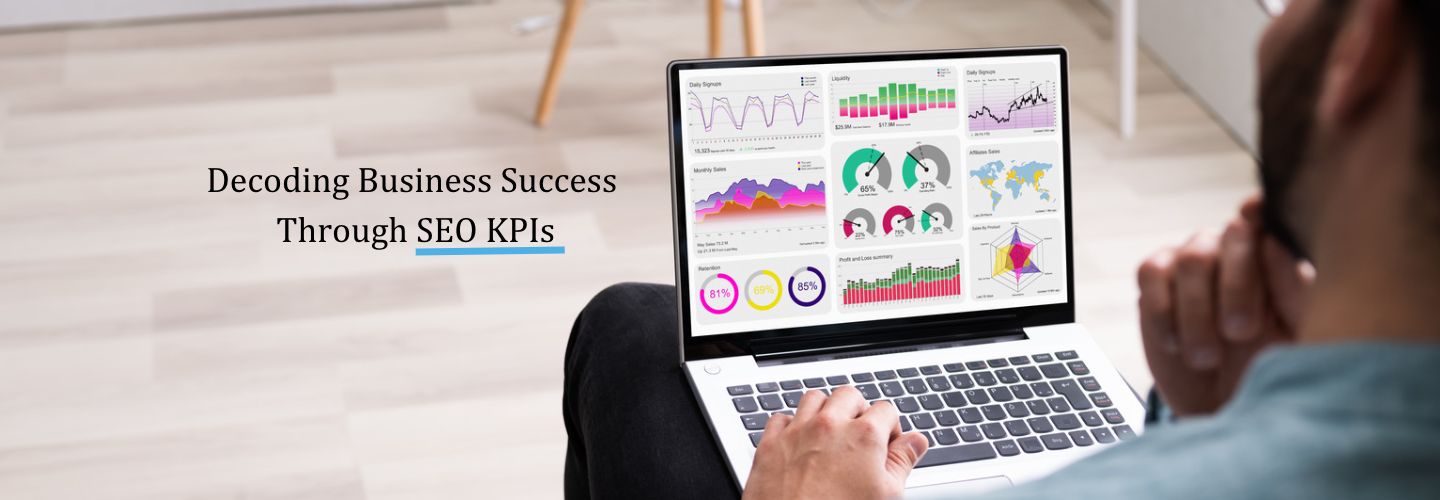How Do SEO KPIs Directly Influence Your Website Success?

Are you still guessing 🤔 how well your SEO strategies are performing? To accurately understand the success of your online efforts, you need to start tracking the right “SEO KPIs”📊.
In an era where data is the new currency 💰, businesses are continuously leveraging it to strategise their operations and marketing efforts.
It’s no longer sufficient to simply create a website and wait for the magic to happen 🧙♂️.
The real game begins 🎮 when you start monitoring the right KPIs, align them with your business goals 🎯, and adjust your strategies based on the insights.
So, which SEO KPIs should you focus on to help turn clicks into conversions and signups 📈?”
We will decode the four major categories of SEO KPI metrics you need to track to tie your business goals to the tangible outcomes – clicks, links, and signups. Ready to navigate through?
⛵ Let’s dive in!
1️⃣ Traffic Metrics 🚦
The first line of SEO metrics involves analyzing your website’s traffic. These metrics provide insights into the volume of users reaching your website through organic search.
- Organic Traffic: This refers to the number of visitors coming to your site through search engines like Google. It’s a critical indicator of your SEO efforts’ success.
- Traffic by Device: This metric helps you understand what devices your audience uses (desktop, mobile, or tablet). It’s crucial in optimizing the user experience and ensuring your website is accessible and responsive.
- New vs. Returning Users: Tracking these metrics helps you understand user behavior, gauge the effectiveness of your content, and assess user loyalty.
2️⃣ Engagement Metrics 🎯
The second category focuses on how users interact with your website and its content.
- Bounce Rate: The percentage of users who leave your site after viewing only one page. A high bounce rate may indicate irrelevant content or a poor user experience.
- Pages per Session: This metric shows the average number of pages a user views during a single session. More pages per session often indicate high-quality, engaging content.
- Average Session Duration: It tells you the average length of time users spend on your site. The longer the session, the more engaging your content likely is.
3️⃣ Conversion Metrics ✅
Next, we focus on the actions users take on your website that fulfill your business objectives.
- Goal Completions: These are the specific actions you want users to complete on your website, like signups, downloads, or purchases.
- Conversion Rate: This is the percentage of users who complete a desired action. It directly ties your website’s performance to your business goals.
- Cost per Conversion: This metric helps you understand the return on investment of your SEO efforts. It’s calculated by dividing the total cost of your SEO efforts by the number of conversions.
4️⃣ Link Metrics 🔗
Finally, link metrics focus on the health and impact of your website’s backlink profile.
- Total Backlinks: This measures the number of incoming links to your website. More backlinks from high-quality sources can improve your SEO.
- Referring Domains: This metric is the number of unique domains linking back to your site. Variety in your backlinks contributes to your site’s authority.
- Domain Authority: This score predicts how likely your website is to rank on search engine result pages (SERPs). Higher scores correlate with better search rankings.
Now that we’ve explored the four broad categories of SEO KPI metrics, you can easily link your business goals to measurable outcomes such as clicks, links, and signups.
It’s important to remember that while tracking these metrics, the key is not to aim for perfection, but progress. Keep your focus on continuous improvement, and you’ll be well on your way to SEO success! 🚀




